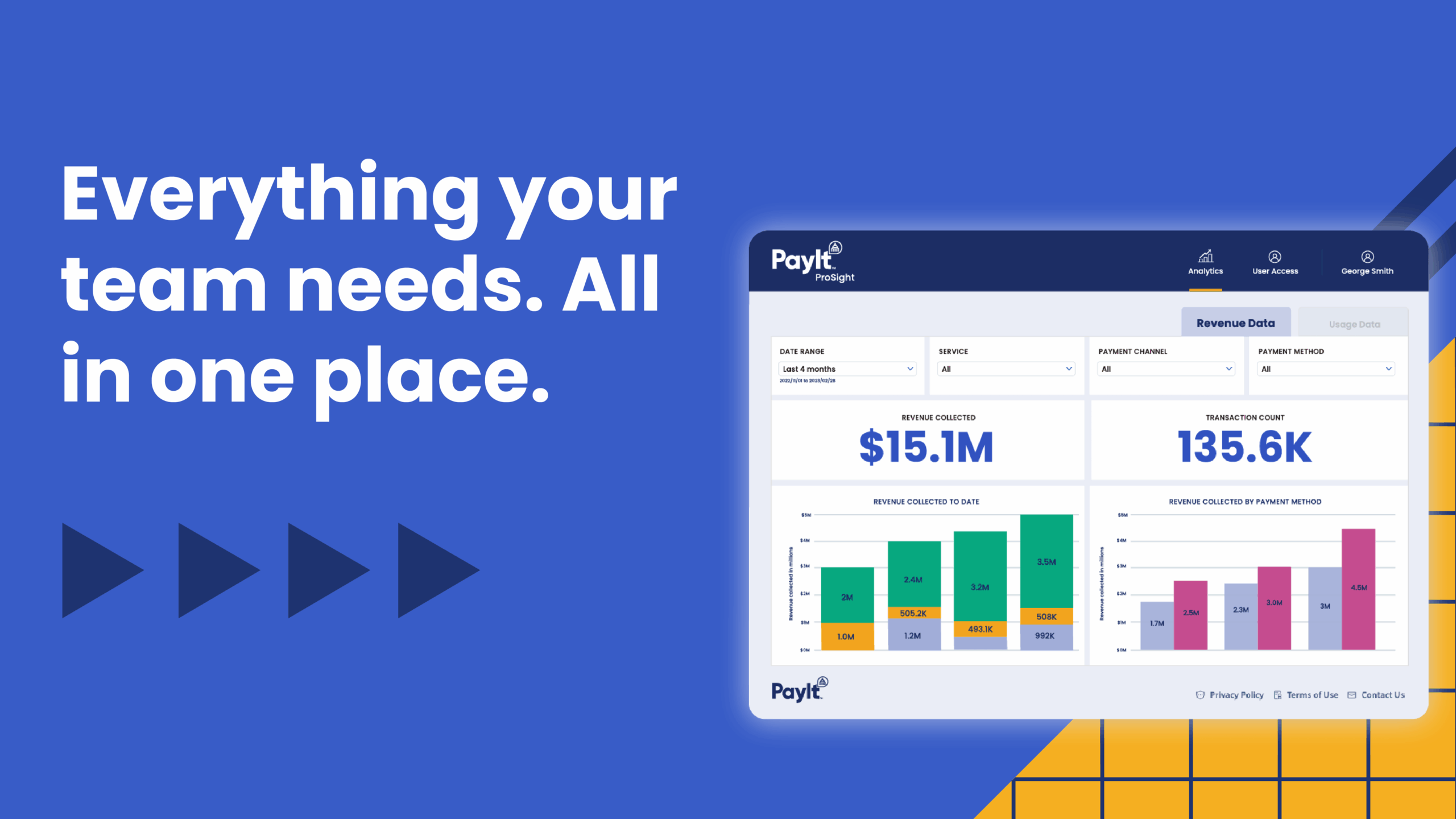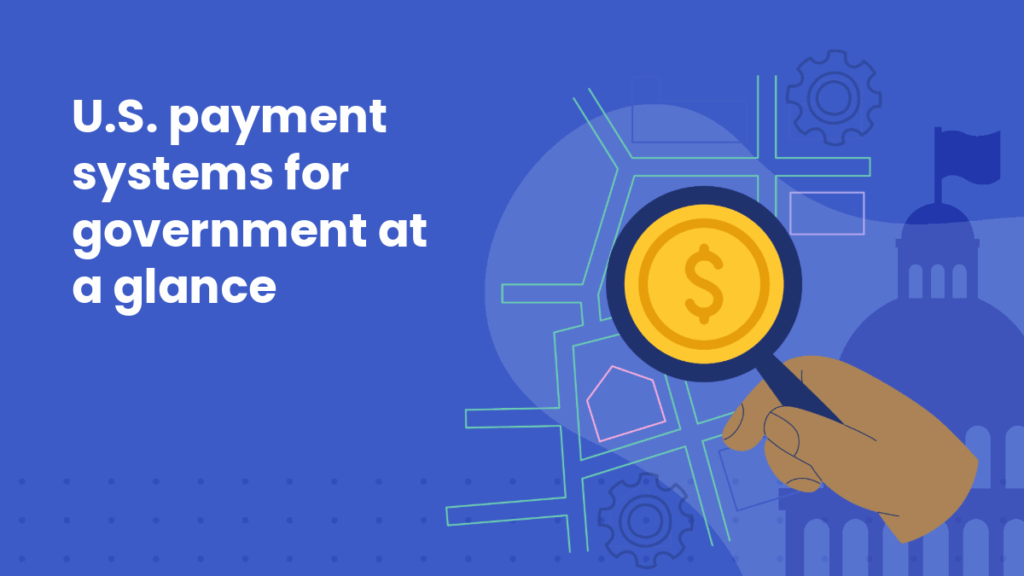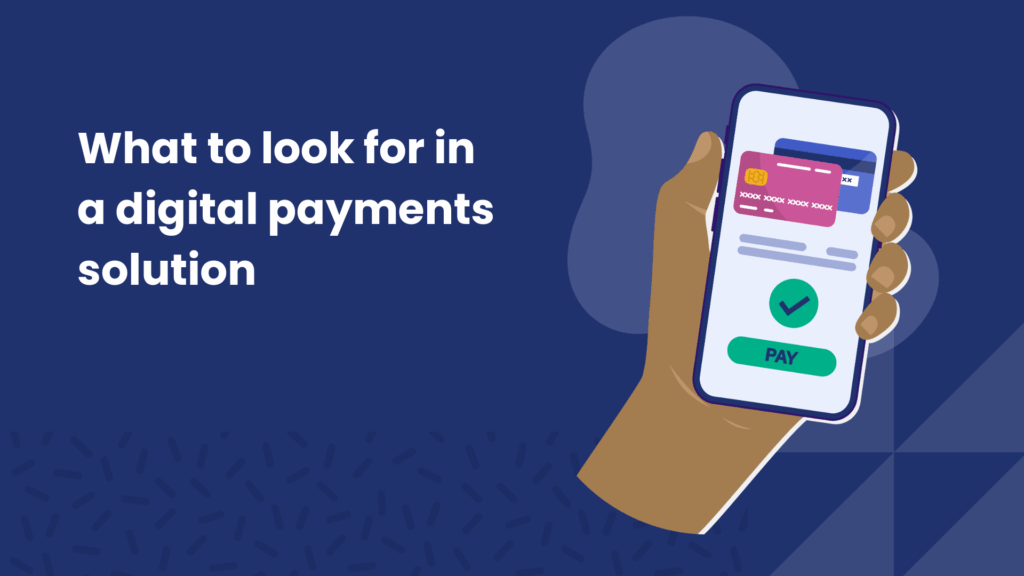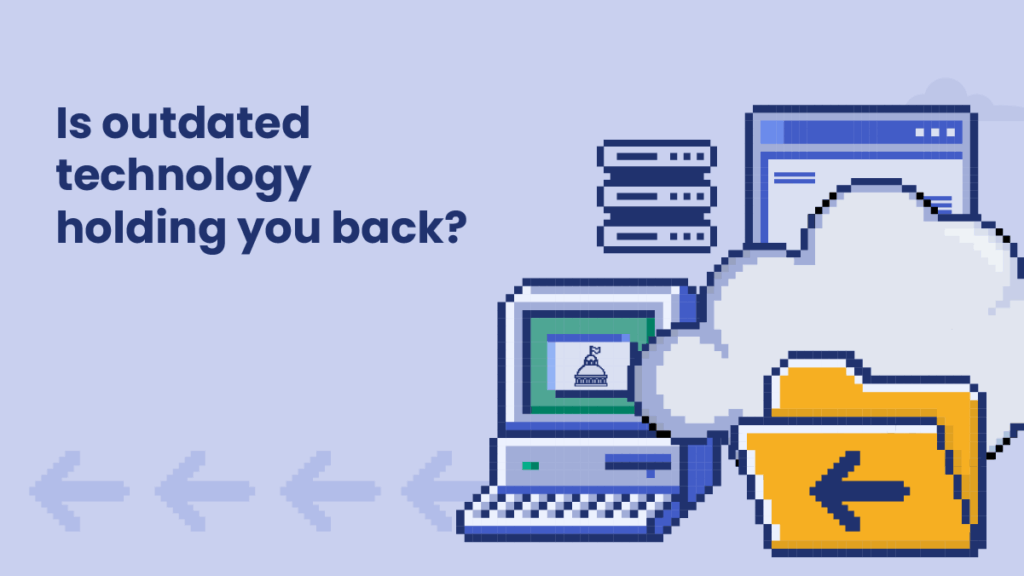Ins and outs of government payment processing admin portals

Government work runs on details: transactions, applications, enrollments, and accurate records. An agency admin portal pulls all of that into one secure place for staff. Instead of juggling emails, spreadsheets, and multiple systems, teams can search, act, and report from a single site. The result is:
- Faster first-contact resolution for residents
- Fewer handoffs between customer service, operations, and finance
- Clearer audit trails and tighter controls for sensitive actions
- Better reporting with exports that finance can use right away
Critical capabilities of government payment processing admin tools
A well-built admin portal isn’t just a convenience; it’s a foundation for consistent service. Here’s what to look for:
1. Payment and transaction management
A strong government payment portal streamlines transactions by combining intuitive search, flexible filters, and detailed records.
- Staff can locate payments using free-form terms or filter by date, amount, method, status, or features like AutoPay. Each record includes history, customer type, staff notes, and links to resident profiles.
- Permission-based refunds allow full, partial, or line-item options with standardized reason codes and a complete audit trail, while CSV export supports deeper analysis and smooth casework handoffs.
Tip: Ask the vendor to search using a partial transaction number, filter by payment method (including digital wallets), and process a test refund that you can verify in the audit history afterward.
2. Enrollment insights and management
Admin tools provide staff with visibility into enrollment activity, recurring payments, paperless billing, upcoming and past scheduled payments, and enable the management of unenrollment when permissions allow. For eBilling and AutoPay, staff can check enrollment status and view notification and confirmation messages sent to the resident.
Tip: Confirm that permission rules limit who can unenroll an account and that changes appear in the enrollment history with timestamps.
3. Application search and case actions
Staff should be able to locate an application and take any next steps without leaving the government payment processing admin portal. Look for these features:
- Search and filters to find submissions quickly, plus an open ID field for known application identifiers
- Application details, including submitted data, uploaded documents with preview and download, and a full history
- Status updates with standardized denial reasons and internal notes, captured in the record’s history
4. Resident profile: A one‑stop view
A consolidated view equips staff to assist residents quickly, showing recent transactions and applications with links to view full details, AutoPay and eBilling enrollment status, communications sent to a resident, and saved payment methods (displayed with limited details for privacy).
5. Analytics you can actually use
Analytics should do more than generate reports. They should support daily operations while giving leadership the insights they need. Staff rely on at-a-glance KPIs, such as revenue collected, payment count, and transaction count, to monitor performance in real-time. Meanwhile, filters for dates, services, payment methods, and channels make it easy to answer specific questions.
Similarly, time-period comparisons help spot year-over-year trends, and flexible breakdowns by day, week, month, or year allow teams to adapt reporting to their workflow.
6. Reconciliation and reporting access
Finance teams should not have to chase files over email. Look for an administrative portal that has:
- Self‑serve remittance reports available in a historical repository
- Downloadable formats your accounting software can open
- Consistent naming so last month’s and last year’s files are easy to find
7. Security, permissions, and user administration
Protecting sensitive actions means giving staff the right level of access without exposing data or processes unnecessarily. Role-based controls ensure only authorized users can issue refunds, manage enrollments, or view sensitive information, while user management tools let admins add, edit, or remove accounts and resend invites as needed.
Security is reinforced with:
- Time-boxed links for password resets or invitations
- MFA with time-based one-time passwords for higher-assurance sign-ins
- Permission boundaries that prevent over-provisioning by limiting what each admin can grant
Together, these measures keep access aligned with job duties and safeguard sensitive operations day to day.
8. Interoperability, exports, and retention
Portals should respect your records policies and make data work for you. Things like consistent CSV exports, clear performance guardrails, and retention guidance make work easier and faster for staff.
9. Usability and accessibility for staff
Any admin portal your team uses every day should be easy to navigate. Look for features such as browser support, clean layouts, and plain-language labels that reduce training time. You also don’t want to have to mess with special installs or plugins to get to work.
A resident communications view is a big bonus
Some portals include a communications log, allowing staff to view platform emails sent to a resident and, with the appropriate permissions, resend them when necessary. If you handle high call volumes, this can improve first‑contact resolution.
Common pitfalls when assessing administrative tools for public sector staff
Not every admin portal lives up to its promise. Some tools can complicate work rather than making it easier. During evaluations, watch out for features that appear promising in a demo but fall short in practice.
A few red flags include:
- Requiring email or support tickets to get remittance files instead of letting staff download them directly
- “All-or-nothing” permissions that give users more access than their job requires, creating unnecessary risk
- Analytics that can’t be filtered by service, payment method, or channel, leaving staff to guess at the details
- Search fields that only accept exact IDs instead of flexible terms like names, partial numbers, or addresses
Focus on portals that truly help staff resolve issues quickly, safeguard sensitive actions, and give finance the reliable data it needs.
Preview a government payment processing admin portal
If you want to see these capabilities in practice, PayIt’s ProSight admin portal offers virtually all of these critical features. We’re happy to walk through a live demo using your scenarios.
Looking for more content?
Get articles and insights from our monthly newsletter.




